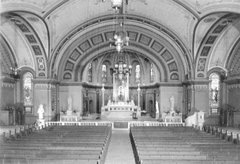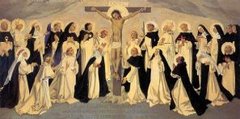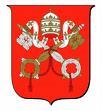Chapter XII
The Church at the Council of Constantinople declared concerning herself that she is One, Holy, Catholic, and Apostolic. These are not only her essential qualities, but her outward and visible signs, the marks whereby she may always be infallibly recognized.
…
I. The church is, first, ONE. Unity is its prime characteristic. Whatever else the Church may be, it is one – visibly one, unmistakably one, incontrovertibly one.
…
II. The Church is Holy. Holiness is of the essence of the Church. The Church, therefore, cannot cease to be holy without ceasing to exist. As the unity of the Church implies its indivisibility, so the sanctity of the Church implies its incorruptibility. But the Reformation can be justified only by the assertion that the Church had become corrupted. Protestantism, therefore, is founded upon and absurdity.
…
III. The true Church is catholic: Catholicity is the third note of the Church. I have already spoken of the error of those who make it the first or the second. No one can rightly apprehend the Church’s universality who does not fully understand the nature of the Church’s unity. Unitas Catholica, quae toto orbe diffusa est (St. Augustine). The formula which is to guide us in our work of identification is not, The Catholic Church, is somehow or other One, but The Church which is one and undivided, is also Catholic. And, read thus, the mark of Catholicity is so plain that “the wayfaring man, though a fool,” cannot err by it.
…
IV. Finally, the Church, One, Holy, and Catholic, is also Apostolic. We shall now have no difficulty in ascertaining the sense in which Apostolicity is, and was intended to be, a note of the Church. Evidently it cannot be meant that the Church is to be recognized by the fact that its doctrine is Apostolic. This would be saying that the true Church is that which teaches the Truth – which would be an indeterminate proposition. We cannot know what the truth is until we have first found the true Church. And to discover the true Church, we must have some external and visible mark to guide us. The sign we are seeking can conceivably be no other than that of which all the ancient Fathers speak, and by which they identified the Church of their creed. It is found in the fact of Apostolic Succession.
The Anglican error, of course, differs from the Orthodox error, in that the apostolicity of the Orthodox is actual rather than presumed, but the end point is the same, multiple bodies without a common head.





















No comments:
Post a Comment